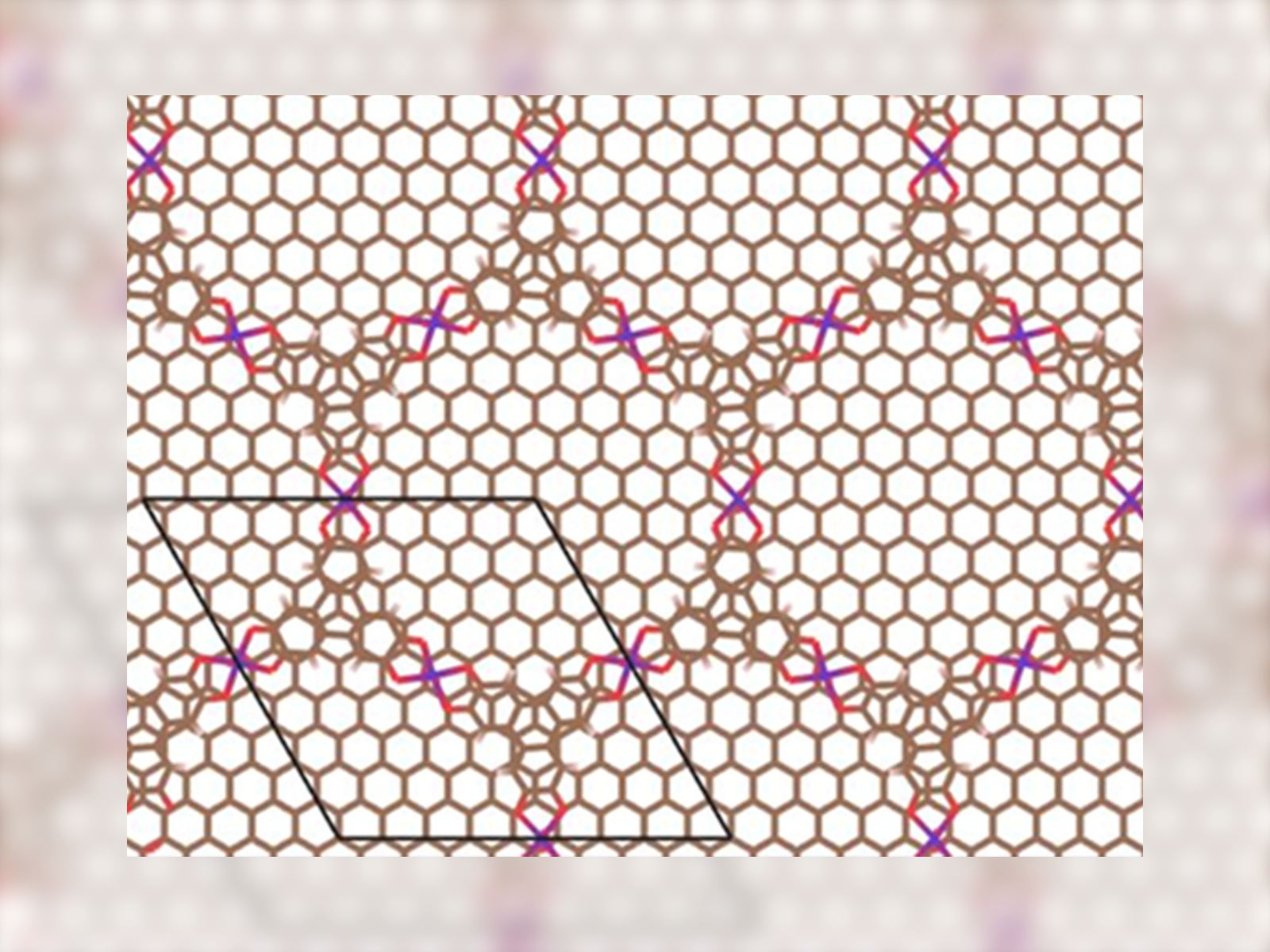Electron Localization in Substrates Directs the Growth Path of a Two-Dimensional Metal-Organic Framework
A combined experimental and modeling study shows that electronic interactions direct how a metal-organic framework grows

The underlying locations of electrons within a substrate play an important role in the final structure of supported metal-organic frameworks.
(Image by Maria Sushko | Pacific Northwest National Laboratory)
The Science
Metal-organic frameworks (MOFs) have a wide range of exciting applications, from gas storage to batteries. Electronically conductive two-dimensional (2D) MOFs are promising materials for use in electrochemical systems. However, their effective application requires controlling the orientation between the MOF and the substrate it sits atop. A combined experimental and modeling study identified the electronic structure of the substrate as key to the growth pattern of a Ni-catecholate (Ni-CAT-1) 2D MOF. The electronic interactions between the substrate and linker molecules that bind the MOF to the substrate direct how the initial layer forms and control overall MOF growth.
The Impact
Harnessing the full potential of 2D MOFs requires precise control over their structure, orientation, and pore alignment, particularly for electrochemical applications. This work identified a molecular mechanism that can control the orientation of a supported MOF system. The mechanism may be applicable to other types of MOFs, providing a general principle to design and build functional materials.
Summary
The nucleation and growth of Ni-CAT-1 MOFs at a solid/liquid interface is controlled by the interactions of the linker molecules with the electronic structure of the substrate. For graphite and copper substrates, substrate-linker interactions result in different interfacial layers but a parallel alignment of Ni-CAT-1 to the substrate surface and the MOF stacking into vertical columns. This leads to preferential growth of Ni-CAT-1 crystals with pores vertically aligned with respect to the substrate. The results suggest that the substrate influences the crystal orientation, nucleation density, and growth kinetics of the MOF. This work provides meaningful insights into interfacial control over the growth of a 2D π-conjugated MOF film on solid substrates that can be used to design highly oriented functional materials.
PNNL Contact
Maria Sushko, Pacific Northwest National Laboratory, maria.sushko@pnnl.gov
Funding
This work was supported by the Department of Energy, Office of Science, Basic Energy Sciences, Materials Sciences and Engineering Division, Synthesis and Processing Science, FWP 12152.
Published: March 6, 2023
Shin S., J. Tao, N.L. Canfield, M.E. Bowden, J. Heo, D. Li, J. Liu, J.J. De Yoreo, P.K. Thallapally, M.L. Sushko. 2023. "Self-assembly and oriented growth of conductive Ni-CAT-1 metal-organic framework at solid-liquid interfaces," Advanced Materials Interfaces, 10, 2202031. [DOI: 10.1002/admi.202202031]